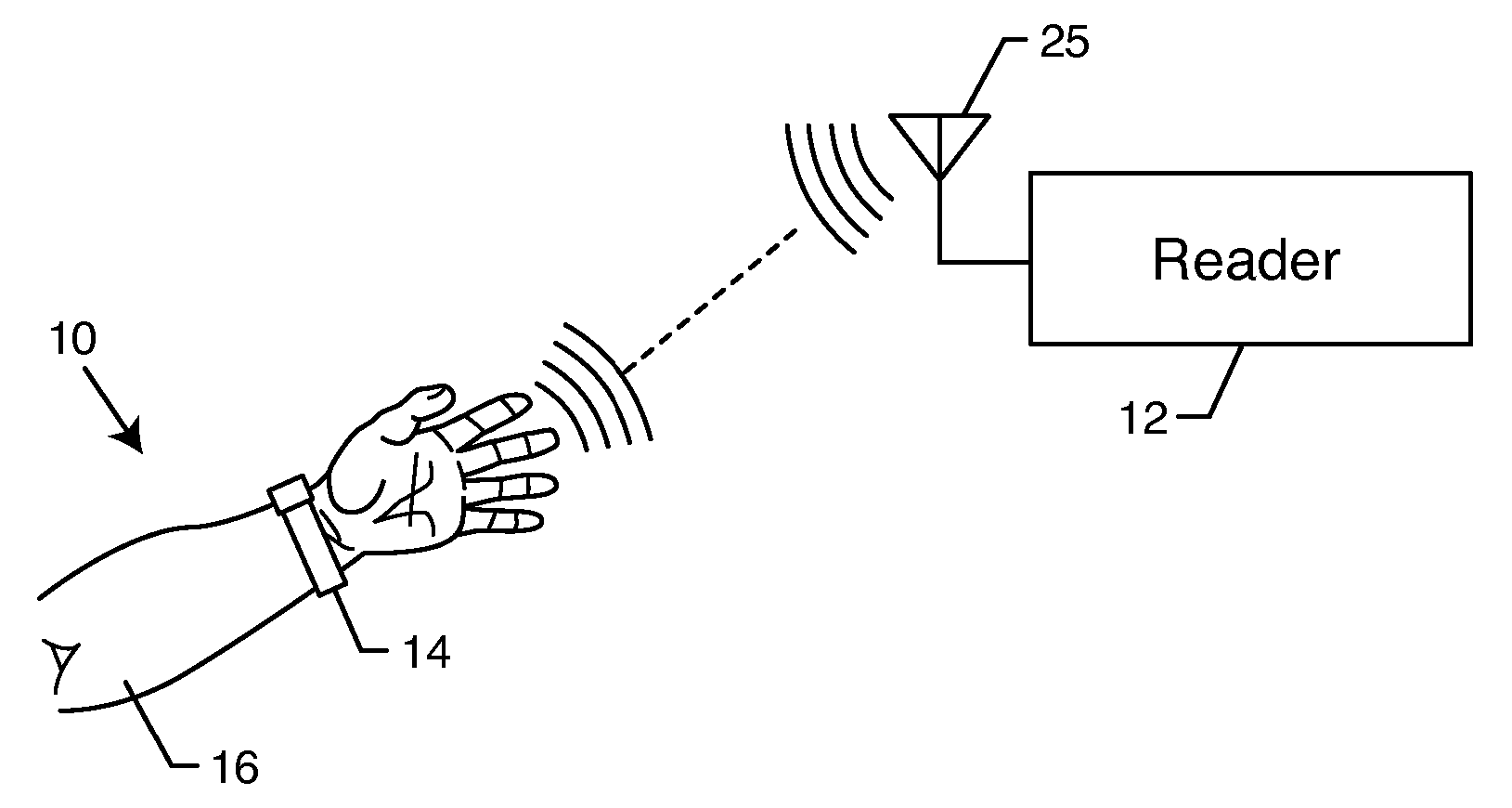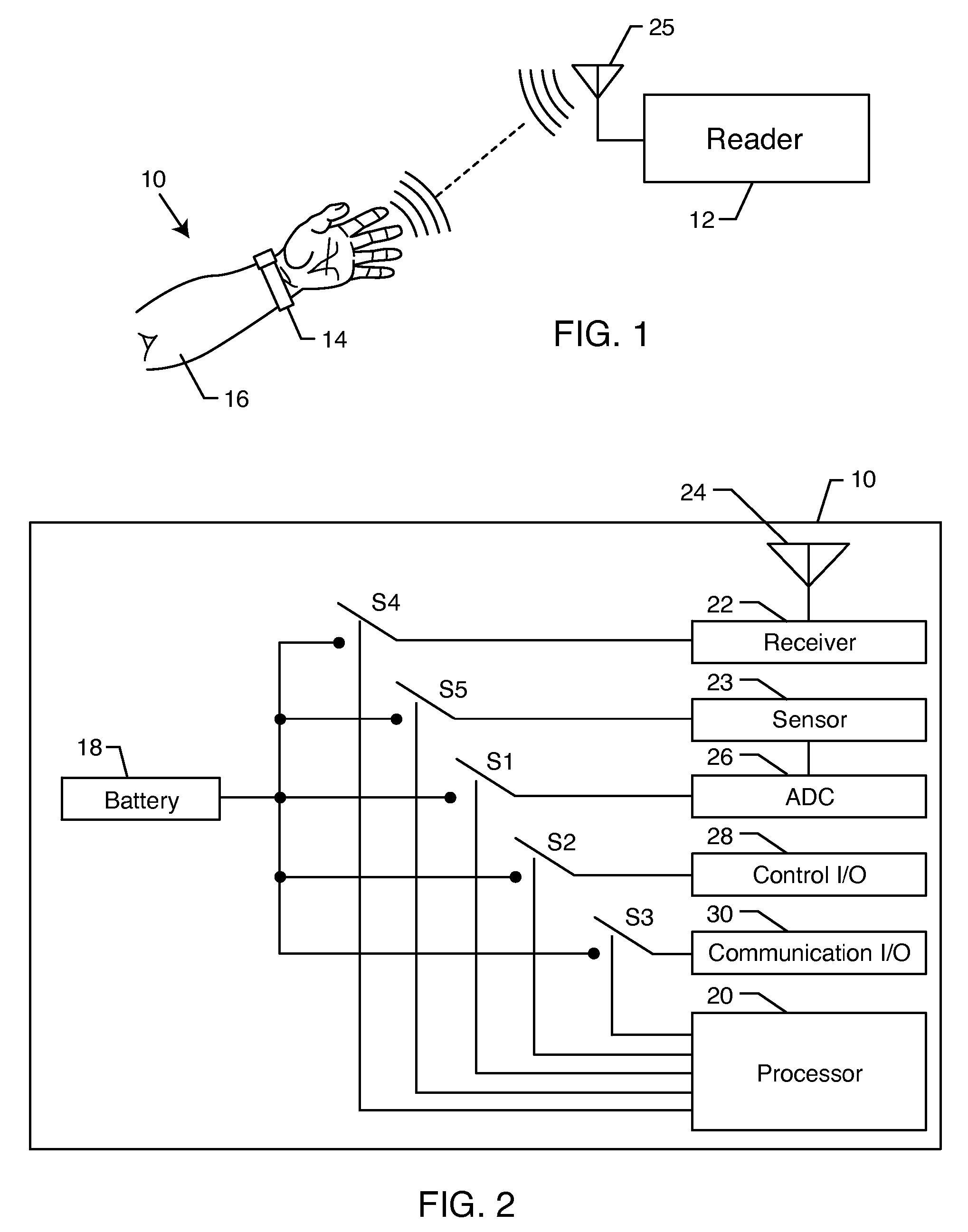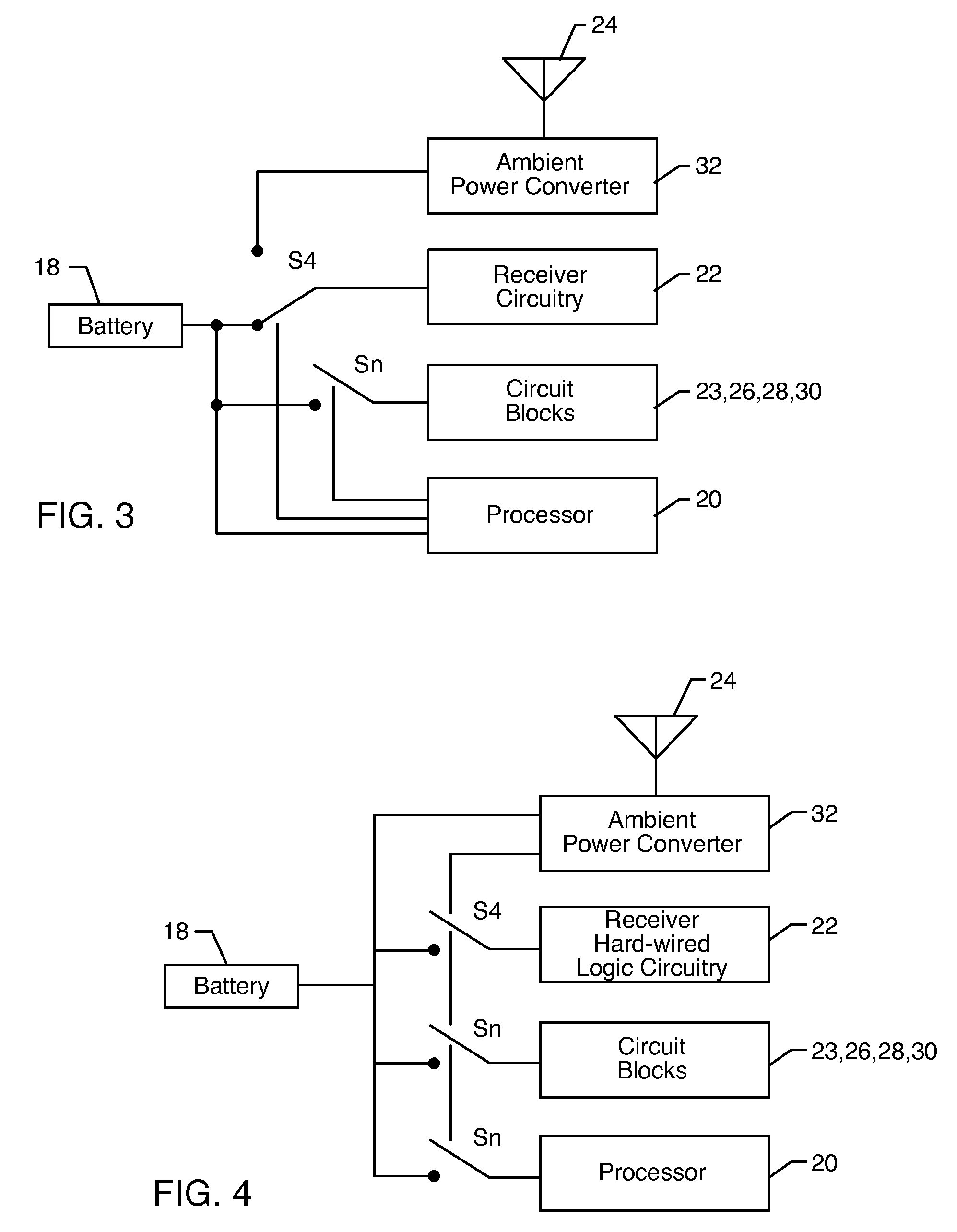Semi-active RFID tag and related processes
a technology of semi-active rfid tags and tags, which is applied in the direction of burglar alarms, mechanical actuation of burglar alarms, and the removal of hand-held items, etc., can solve the problems of slow data transmission speed, battery power drain, and significant limitation of the utility of active rfid tags, so as to prolong battery service life, save battery power, and optimize data transaction quality
- Summary
- Abstract
- Description
- Claims
- Application Information
AI Technical Summary
Benefits of technology
Problems solved by technology
Method used
Image
Examples
Embodiment Construction
[0033] As shown in the exemplary drawings, an improved radio frequency identification (RFID) device or tag referred to generally in FIG. 1 by the reference numeral 10 is provided for communication with an associated reader 12. FIG. 1 shows the RFID tag 10 mounted onto or otherwise incorporated within a structure such as the illustrative flexible wristband 14 for mounting or attaching the tag 10 onto a person 16 or object associated therewith. In accordance with a primary aspect of the invention, the tag 10 includes an on-board flexible battery 18 (FIGS. 2-4) in combination with a power management system for controllably enabling limited portions of the tag circuitry in a manner designed to conserve battery power and thereby prolong battery service life. The inclusion of the on-board flexible battery 18 beneficially enhances signal transmission range and accommodates relatively rapid and optimized signal transmission speeds suitable for use in a broad range of communication protocols...
PUM
 Login to View More
Login to View More Abstract
Description
Claims
Application Information
 Login to View More
Login to View More - R&D
- Intellectual Property
- Life Sciences
- Materials
- Tech Scout
- Unparalleled Data Quality
- Higher Quality Content
- 60% Fewer Hallucinations
Browse by: Latest US Patents, China's latest patents, Technical Efficacy Thesaurus, Application Domain, Technology Topic, Popular Technical Reports.
© 2025 PatSnap. All rights reserved.Legal|Privacy policy|Modern Slavery Act Transparency Statement|Sitemap|About US| Contact US: help@patsnap.com



